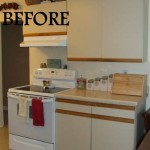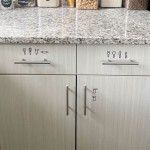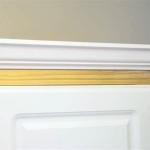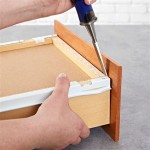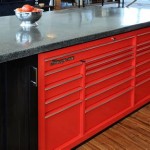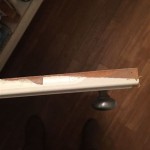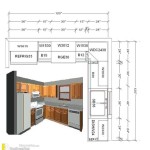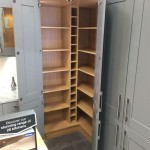Double-Sided Hanging Kitchen Cabinets: An Innovative Storage Solution
Double-sided hanging kitchen cabinets represent a relatively novel approach to kitchen storage, offering increased capacity and accessibility compared to traditional single-sided cabinets. These cabinets, mounted to the ceiling or suspended from a structural framework, provide storage space on both sides, effectively doubling the available area within the same footprint. This design is particularly beneficial in kitchens with limited wall space, open-concept layouts, or island configurations where maximizing vertical space is critical.
The functionality of double-sided hanging cabinets stems from their ability to create a central storage hub within the kitchen. This configuration allows for easy access to utensils, cookware, and other kitchen essentials from either side of the cabinet, streamlining workflow and reducing the need to traverse the kitchen repeatedly. This can significantly enhance efficiency during meal preparation and cleanup.
The installation of double-sided hanging kitchen cabinets typically requires a robust support system. Due to the weight and potential load of the stored items, the cabinets must be securely anchored to the ceiling joists or a reinforced framework. Professional installation is often recommended to ensure proper weight distribution and prevent structural issues. The design and placement of these cabinets should be carefully considered to ensure they do not obstruct sightlines or impede movement within the kitchen.
The aesthetic impact of double-sided hanging cabinets is also significant. They can serve as a focal point in the kitchen, adding visual interest and architectural detail. A wide variety of materials, finishes, and styles are available to complement different kitchen designs, from modern and minimalist to traditional and rustic. The choice of materials can influence the overall look and feel of the kitchen, as well as the durability and maintenance requirements of the cabinets.
Enhanced Storage Capacity and Accessibility
The primary advantage of double-sided hanging kitchen cabinets lies in their enhanced storage capacity. By utilizing both sides of the cabinet, the available storage space is effectively doubled compared to traditional wall-mounted cabinets. This is particularly useful in smaller kitchens or kitchens with a large number of appliances and utensils. The increased storage space can help to declutter countertops and create a more organized and efficient workspace.
The accessibility of items stored in double-sided hanging cabinets is also significantly improved. The ability to access items from either side of the cabinet reduces the need to reach into the back of the cabinet, making it easier to retrieve frequently used items. This is especially beneficial for individuals with limited mobility or those who prefer a more ergonomic kitchen design. The strategic placement of these cabinets can also improve workflow by positioning frequently used items within easy reach from multiple workstations within the kitchen.
Furthermore, the design of double-sided hanging cabinets can be customized to meet specific storage needs. Adjustable shelves, pull-out drawers, and specialized storage compartments can be incorporated to accommodate different types of items. This allows for a high degree of organization and ensures that all items are easily accessible. The internal configuration of the cabinets can be tailored to suit individual cooking habits and preferences.
The efficient use of vertical space is another key benefit of double-sided hanging cabinets. By extending the cabinets upwards, they utilize previously unused space, maximizing the overall storage potential of the kitchen. This is particularly advantageous in kitchens with high ceilings, where the vertical space can be effectively utilized to create a more spacious and organized environment. The vertical extension also minimizes the footprint of the cabinets, freeing up valuable floor space.
Design Considerations and Material Choices
The design of double-sided hanging kitchen cabinets requires careful consideration of several factors, including the overall style of the kitchen, the available space, and the desired functionality. The cabinets should be designed to complement the existing aesthetic of the kitchen while also providing ample storage space and easy accessibility. The size and shape of the cabinets should be carefully considered to ensure they do not obstruct sightlines or impede movement within the kitchen.
The choice of materials for double-sided hanging cabinets is also crucial. The materials should be durable, easy to clean, and resistant to moisture and heat. Common materials include wood, laminate, metal, and glass. Wood provides a classic and timeless look, while laminate offers a more affordable and low-maintenance option. Metal and glass can be used to create a modern and contemporary aesthetic. The choice of materials should also consider the overall weight and load-bearing capacity of the cabinets.
The finish of the cabinets is another important design consideration. A wide variety of finishes are available, including paint, stain, and veneer. The finish should be chosen to complement the overall style of the kitchen and to provide a durable and easy-to-clean surface. The color of the finish can also have a significant impact on the overall look and feel of the kitchen, with lighter colors creating a more spacious and airy atmosphere and darker colors adding depth and drama.
Lighting is an essential aspect of double-sided hanging kitchen cabinet design. Incorporating lighting within the cabinets or above them can enhance visibility and create a more inviting atmosphere. Under-cabinet lighting can illuminate the countertops, while interior lighting can make it easier to find items stored within the cabinets. The choice of lighting should be carefully considered to ensure it complements the overall design of the kitchen and provides adequate illumination for all tasks.
Installation and Structural Support
The installation of double-sided hanging kitchen cabinets requires a robust support system to ensure the safety and stability of the cabinets. Due to the weight of the cabinets and the items they will contain, they must be securely anchored to the ceiling joists or a reinforced framework. Professional installation is highly recommended to ensure proper weight distribution and prevent structural issues.
Before installation, it is essential to assess the structural integrity of the ceiling. The ceiling joists must be strong enough to support the weight of the cabinets and their contents. If the ceiling joists are not adequate, additional reinforcement may be required. This may involve adding additional joists or strengthening the existing joists with metal plates or straps.
The method of attachment will depend on the type of ceiling and the weight of the cabinets. Common methods include using lag screws or bolts to attach the cabinets directly to the ceiling joists. Alternatively, a suspended framework can be used to distribute the weight more evenly across the ceiling. The framework should be constructed from durable materials such as steel or aluminum and should be designed to withstand the maximum load of the cabinets.
The placement of the cabinets should be carefully considered to ensure they do not obstruct sightlines or impede movement within the kitchen. The cabinets should be positioned in a location that is easily accessible from multiple workstations within the kitchen. The height of the cabinets should also be considered to ensure they are within easy reach for all users. The cabinets should be installed at a height that allows for comfortable access to the top shelves without requiring the use of a step stool.
The electrical considerations are also important during installation. If the cabinets include integrated lighting, wiring it properly is essential. This involves running electrical cables through the ceiling and connecting them to a power source. A qualified electrician should handle all electrical work to ensure safety and compliance with local building codes.
Finally, after installation, it is important to regularly inspect the cabinets and the support system to ensure they remain in good condition. Check for any signs of sagging, loose connections, or damage to the materials. Promptly address any issues to prevent further damage and ensure the safety of the cabinets.

The Double Sided Glass Cabinet Divider Design Kitchen Cabinets Display Interior

How To Make Your Kitchen Beautiful With Pretty Cabinet Details Heather Hungeling Design

4 Pros And Cons Of Double Stacked Kitchen Cabinets

Everything You Need To Know About Stacked Cabinets Wc Supply Whole Cabinet

Custom Cabinets Kitchen Renovation New

Diy Stacked Kitchen Cabinets Frills And Drills

4 Pros And Cons Of Double Stacked Kitchen Cabinets

Diy Stacked Kitchen Cabinets Frills And Drills

8 Beautiful Ways To Work Glass Into Your Kitchen Cabinets

8 Cabinet Joints For Your Home Improvement Project
Related Posts

